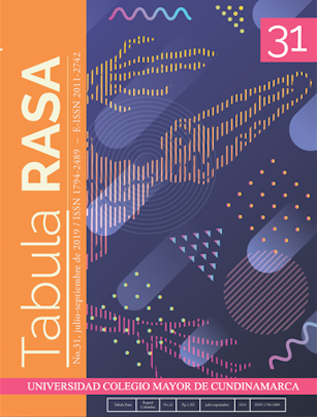"Criaturas espejo" : política antihumana en Alicia de Tenniel.
"Looking glass creatures" : anti-human politics in Tenniel’s Alice.
Mostrar biografía de los autores
Este artículo plantea el realismo indexical de Tenniel –fidelidad biológica en la presentación gráfica de los no humanos– como una revisión crítica del antropocentrismo operativo en los cuentos de Alicia de Carroll. Se examinan Alicia en el país de las maravillas y A través del espejo, y se cuestiona la reputación extendida de Carroll como uno de los primeros defensores de los derechos de los animales y opositores a la vivisección con base en su postura carnívora bienestarista. Las imágenes de Tenniel coinciden con el texto de Carroll en múltiples aspectos éticos claves, pero también articulan una nueva reflexión sobre los no humanos y el potencial especialmente limitado de cualquier criatura o política «imaginada» por los humanos. También se evalúa los demás trabajos de Tenniel en el periodo, y se demuestra su aplicación racista de rasgos animales en su tira cómica política para Punch Magazine en el siglo XIX y sus demás divergencias de las técnicas gráficas históricas naturales en las imágenes importantes de Alicia. La obra de Tenniel se compara con los estilos visuales de otros caricaturistas y de taxidermistas en las vibrantes tradiciones de colección de animales y representación de los mismos en la época. Pero finalmente, el artículo sugiere un claro pensamiento sobre la expresión humana frente a la fidelidad biológica en la intersección de texto e imagen que también se refleja en las teorías de la animalidad y el antropocentrismo. Las políticas antihumanas de Tenniel surgen del contexto de sus técnicas realistas de historia natural en el texto, en un cuestionador comentario producto de la reflexión. Este extraño biologicismo resulta en la obsesa fantasía de lo real, en esos ejemplos, pues desestabiliza tanto la presunción de clasificación racional y de propiedad ética, al igual que la naturalidad acrítica de una protagonista infantil. Alicia es la «chica mala».
Visitas del artículo 156 | Visitas PDF 83
Descargas
- Abeles, F.F. (Ed.). (2001). The Political Pamphlets and Letters of Charles Lutwidge Dodgson and Related Pieces: A Mathematical Approach. Charlottesville, VA: University of Virginia Press.
- Bewell, A. (2004). Romanticism and colonial natural history, Studies in Romanticism, 43(1), 5-34.
- British Library (2019). Lewis Carroll’s Alice’s Adventures Under Ground – Introduction. Online Gallery. Virtual Books: Images Only. Recuperado de: http://www.bl.uk/onlinegallery/ttp/alice/accessible/introduction.html
- British Library (2019a). Aesop’s Fables illustrated by John Tenniel, 1848. Collection items. Recuperado de: https://www.bl.uk/collection-items/1848-edition-of-aesops-fables-illustrated-by-john-tenniel
- Burgan, R. (2014). Anthropomorphic taxidermy: How dead rodents became the darlings of the Victorian elite. Atlas Obscura, Recuperado de: https://www.atlasobscura.com/articles/anthropomorphic-taxidermy-how-dead-rodents-became-the-darlings-of-the-victorian-elite
- Carroll, L. (1996 [1875]). Some Popular Fallacies About Vivisection, in The Complete Illustrated Lewis Carroll. Ware, Hertfordshire: Wordsworth Editions.
- Carroll, L. (1894). Sylvie and Bruno Concluded. New York, NY: Macmillan. Recuperado de: http://www.gutenberg.org/files/48795/48795-h/48795-h.htm
- Carroll, L. (1876). The Hunting of the Snark. London: Macmillan Publishers.
- Daston, L. & Mittman, G. (Eds.). (2005). Thinking with Animals: New Perspectives in Anthropomorphism. New York, NY: Columbia University Press.
- Douglas-Fairhurst, R. (2015). The Story of Alice: Lewis Carroll and the Secret History of Wonderland. Cambridge, MA: fte Belknap Press of Harvard University Press.
- Gardner, M. (1998). The Annotated Alice: The Definitive Edition. New York, NY: Norton.
- Geier, T. (2017). Meat Markets: The Cultural History of Bloody London. Edinburgh: Edinburgh University Press.
- Grandville, J.J. (1987). Fantastic Illustrations of Grandville. S. Applebaum (Ed.). New York, NY: Dover.
- Halfmann, D. & Young, M.P. (2010). War pictures: fte grotesque as a mobilizing tactic. Mobilization: An International Quarterly, 15(1), 1-24.
- Hancher, M. (1985). The Tenniel Illustrations to the “Alice” Books. Columbus, OH: fte Ohio State University Press.
- Jeong, S. (2011). fte para-indexicality of the cinematic image, Rivista di estetica, 46, 75-101.
- Kafka, F. (1995). A Crossbreed. In N. Glatzer (Ed.) & Muir (Trans.). The Complete Stories. New York, NY: Schocken.
- Kenyon-Jones, C. (2001) Kindred Brutes: Animals in Romantic Period Writing. London: Ashgate/Routledge.
- Kérchy, A. (2018). Alice’s non-anthropocentric ethics: Lewis Carroll as a defender of animal rights, Cahiers victoriens et édouardiens, 88. Recuperado de: https://journals.openedition.org/cve/3909
- Kim, C.J. (2015). Dangerous Crossings: Race, Species, and Nature in a Multicultural Age. New York, NY: Cambridge University Press.
- Lovell-Smith, R. (2003). fte animals of Alice in Wonderland: Tenniel as Carroll’s reader, Criticism, 45(4), 383-415.
- Lovell-Smith, R. (2007). Eggs and serpents: Natural history reference in Lewis Carroll’s scene of Alice and the pigeon, Children’s Literature, 35, 27-53.
- Mayer, J. (2009). fte vivisection of the snark, Victorian Poetry, 47(2), 429-448.
- Morris, F. (2005). Artist of Wonderland: The Life, Political Cartoons, and Illustrations of Tenniel. Charlottesville, VA: University of Virginia Press.
- Morris, P. & Ebenstein, J. (2014). Walter Potter’s Curious World of Taxidermy. New York, NY: Penguin.
- Morse, D. & Danahay, M. (Eds.). (2007). Victorian Animal Dreams: Representations of Animals in Victorian Literature and Culture. London: Ashgate/Routledge.
- Museum of Natural History (2019). fte Oxford Dodo. Recuperado de: https://oumnh.ox.ac.uk/the-oxford-dodo
- Paolozzi, A.E. (2015). Alice’s menagerie in Wonderland: Text and image as collaborative critique of animal display in Victorian London, Sloth, 1(1). Recuperado de: https://www.animalsandsociety.org/human-animal-studies/sloth/sloth-volume-i-no-1-march-2015/text-and-image-as-a-collaborative-critique-of-animal-display-in-victorian-london/
- Ritvo, H. (1998). The Platypus and the Mermaid: And Other Figments of the Classifying Imagination. Cambridge, MA: Harvard University Press.
- Simkin, J. (2014). John Tenniel. Spartacus Educational. Recuperado de: https://spartacus-educational.com/Jtenniel.htm
- Ftomson, P. (2019 [1972]). The Grotesque. New York, NY: Routledge.
- Wells, P. (2009). The Animated Bestiary: Animals, Cartoons, and Culture. New Brunswick, NJ: Rutgers University Press.
- Wikimedia Commons (2019). File: Dodo Natural History Museum London England. jpg Recuperado de: https://commons.wikimedia.org/wiki/File:Dodo_Natural_History_Museum_London_England.jpg
- Wikipedia (2019). File:Tenniel Knight.jpg Recuperado de: https://en.m.wikipedia.org/wiki/File:Tenniel_Knight.jpg
- Zipes, J. (1987). fte enchanted forest of the Brothers Grimm: New modes of approaching the Grimms’ fairy tales, The Germanic Review: Literature, Culture, Theory, 62(2), 66-74.
- Ziser, M. & Sze, J. Climate change, environmental aesthetics, and global environmental justice cultural studies, Discourse: Journal for Theoretical Studies in Media and Culture, 29(2), 384-410.








